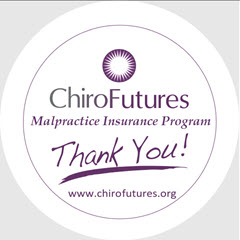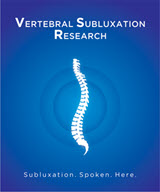CCE & ICA Hold Meeting

CCE Bills Meeting as Example of Transparency
On October 13, 2012 representatives of the Council on Chiropractic Education (CCE) and the International Chiropractors Association (ICA) met in Memphis for what was described as an historic meeting.
According to a CCE/ICA Joint Summary Report posted on the CCE’s website the meeting was initiated by the CCE’s new President, Tom Benberg, Ed.D. Benberg invited ICA’s President Gary Walsemann DC to the meeting with the goal of ensuring that “… the leaders of both organizations had an accurate understanding of the issues which might serve as a foundation for proposing future solutions.” The meeting was also attended by Stephen Welsh DC, Secretary-Treasurer of the ICA and Craig Little DC, DABCO, who is the Chair of the Council and also a member of the West Hartford Group. The members of the West Hartford Group are outspoken critics of subluxation centered chiropractic practice.
In fact, several groups reached out to the CCE and were rebuffed prior to the CCE’s Annual Business Meeting on Friday, January 13, 2012. Prior to the CCE meeting, the Foundation for Vertebral Subluxation (FVS), the International Federation of Chiropractors and Organizations (IFCO) and the Movement for Chiropractic Quality & Integrity (MCQI), collectively known as the “Coalition” reached out to the CCE offering to assist them in addressing the recent deficiencies noted by the United States Department of Education. Dr. David Wickes (then Council Chair) responded that he would pass the offer on to the Council. Reports also indicated that the ICA had also reached out and were told that the CCE’s agenda was full.
According to the report of this recent meeting between the CCE and ICA, the discussion began with the ICA addressing concerns regarding identity and the removal of subluxation and “without drugs and surgery” from the 2012 Standards. The CCE responded that the CCE “had already proposed” putting subluxation back in the Standards and that in regards to the drugs and surgery issue that it was not the role of CCE or the Standards to define scope of practice. Given that the CCE defines chiropractors as primary care physicians this assertion is a contradiction.
Little proposed the formation of a "consensus committee" in order to address the chiropractic “identity issue” for which the ICA “expressed strong support” pledging to work with the CCE to hold a meeting in November of 2012.
According to the Joint Report, the ICA offered three possibilities for consideration:
- Restoration of the prefatory language related to identity previously included in the 2007 Standards.
- Reconsideration of the “Reikeman” amendment that was withdrawn during the deliberations at the January 2011 meeting when the current standards were initially approved.
- Consideration of the language defining a chiropractor currently on the CCE-USA website under the FAQ section.
It should be noted that the CCE currently defines chiropractors as primary care physicians under their FAQ section on their website. There was no mention of the CCE and ICA discussing the highly contentious issue of "primary care physician" which lay at the heart of the entire debate on chiropractic education.
Issues regarding governance structure were also discussed according to the report. Concerns have been repeatedly raised by Stakeholders that the Council has been made up of members with a more allopathic, anti-subluxation view. The CCE seemed to blame the ICA for this because they were not more proactive in submitting nominations for Council positions.
The CCE maintains in the report that the results of recent elections coupled with high turnover leave them optimistic that the results will be “well received” within the profession.
In discussing concerns regarding the Meta Competencies the ICA suggested that the word “or” be removed from Meta Competency 2-E:
Determining the need for chiropractic adjustment, and/or manipulation procedures, or other forms of passive care.
While the CCE agreed to consider this change, the removal of the word “or’ would then mandate manipulative procedures in addition to the adjustment.
In a further word smithing of language in the meta competencies the group’s attention turned to the use of the word “therapeutic” in the following Outcome related to Meta Competency 2-E :
Formulation and documentation of an evidence informed management plan appropriate to the diagnosis, inclusive of measurable therapeutic goals and prognoses in consideration of bio-psychosocial factors, natural history and alternatives to care.
The ICA pointed to concerns that this requirement would not allow for the management of asymptomatic patients and suggested the word be dropped from the language. The CCE stated they did not interpret the language in this fashion, which given the history of CCE, Little and the past Chair, David Wickes, is not a surprise.
Nevertheless the CCE states: “. . . they are willing to consider the suggested change…”
Concerns about the intended objectives of the Standards as discussed were raised by the ICA in regards to Site Teams, however Dr. Benberg stated that these were simply “training issues” which would be given emphasis during training sessions.
The report closes with a statement that the meeting produced a “…sense of joint commitment and willingness to seek solutions to the issues that have been dividing the profession for the past two years.”
Hopefully someone will fill Dr. Benberg in on the fact that the chiropractic profession has been divided for over 100 years - not just two. And despite the appearance of the extension of an olive branch, the profession would be hard pressed to believe that this one meeting signals a policy shift at the CCE. In fact, a reading of the Summary Report reveals that there were no real committments made and might only serve as evidence on the part of the CCE that they are engaging Stakeholders prior to the upcoming hearing with the United States Department of Education in the Spring. Lest anyone forget the CCE has a lot of explaining to do at that meeting. Benberg's actions signal only that the CCE may be taking the situation more seriously now than they have previously and realize they will need a big player in the subluxation camp in order to emerge from the Spring Hearing still in existence. Further, the faction of the profession for which the ICA, at least partly, represents was derided by the CCE as a small “fringe” group just within the last year. And lets not forget that the CCE successfully lobbied the United States Department of Education to remove the NACIQI requirement that it demonstrate widespread acceptance within the profession. This was based on the contrived notion that subluxation centered chiropractors are a minority, fringe group.
The subluxation centered faction of the profession is urged to remember the fable of the Frog and the Scorpion as it moves forward to assist the CCE with its Federal recognition problems.
Blogs
- The Chiropractic Cartel: A Look Back at Bias in Accreditation and its Imact on Today's Profession
- Inside Montana's Chiropractic Monopoly: ACA & MCA's Brazen Board Takeover
- Concerns Grow About Control of the NY State Chiropractic Board by the ACA - Use of X-ray in NY Under Threat
- Reproductive Health Information and Chiropractic Care: Navigating New Privacy Regulations
- Navigating Substance Use Disorder (SUD) Consent: What Chiropractors Need to Know














